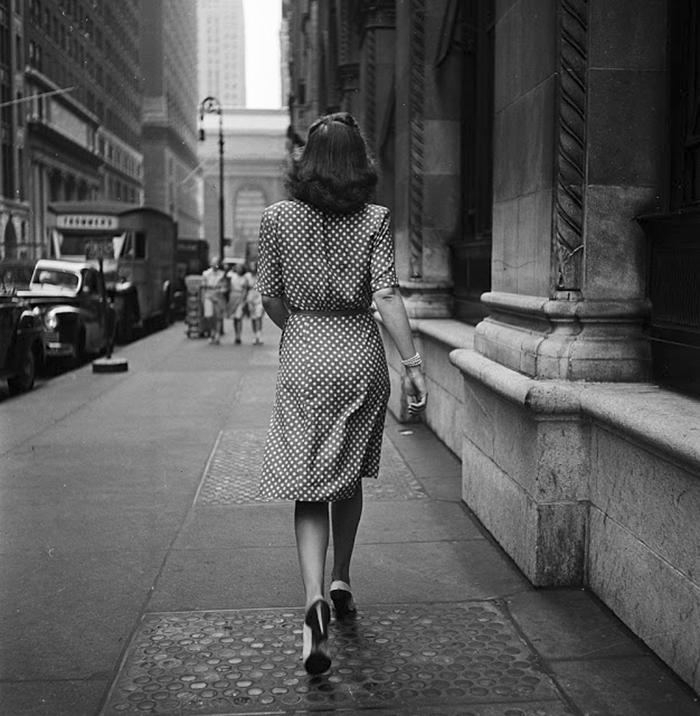-
Please use real names.
Greetings to all who have registered to OPF and those guests taking a look around. Please use real names. Registrations with fictitious names will not be processed. REAL NAMES ONLY will be processed
Firstname Lastname
Register
We are a courteous and supportive community. No need to hide behind an alia. If you have a genuine need for privacy/secrecy then let me know! -
Welcome to the new site. Here's a thread about the update where you can post your feedback, ask questions or spot those nasty bugs!
You are using an out of date browser. It may not display this or other websites correctly.
You should upgrade or use an alternative browser.
You should upgrade or use an alternative browser.
17-Year-Old Stanley Kubrick’s Photos From 1940s New York Reveal That He Was Always A Genius
- Thread starter Antonio Correia
- Start date
Cem_Usakligil
Well-known member
A great link Antonio, thanks for sharing. The pictures are exceptionally good, he apparently had a very good eye even when he was young. What I've asked myself is, regarding some of his photos, are they a result of being at the right place at the right time? I think so, although let me be clear that I don't want to diminish his genius, it is a given!
Asher Kelman
OPF Owner/Editor-in-Chief
Antonio and Cem,
I suspect he is a natural planner.
In this case I would strongly suspect that the decorative squares on the sidewalk interested him. So either he had a woman walk over tgatcspot or more likely he was lying in waitvin a doorway and prefocused to that spot, awaiting for the right person to enter that frame!
Asher
Cem_Usakligil
Well-known member
This is how most of the street shooters seem to be operating nowadays. Find a nice spot and wait for somebody interesting to walk into it. Or charter an extra to do as you instruct them. For me this takes away the spontaneity. And I don't appreciate the staged shoots. Since street is my main genre of photography, this might explain why I am feeling disheartened nowadays..... So either he had a woman walk over tgatcspot or more likely he was lying in waitvin a doorway and prefocused to that spot, awaiting for the right person to enter that frame!
.....
Asher Kelman
OPF Owner/Editor-in-Chief
Cem,
Stop it!!
Your great picture of the wall, stairs, bicycle and picture on the wall, so well composed, had only imaginary people that we can add in our minds! It works and then over and over again!
You often don’t even have people!
Asher
Stop it!!
Your great picture of the wall, stairs, bicycle and picture on the wall, so well composed, had only imaginary people that we can add in our minds! It works and then over and over again!
You often don’t even have people!
Asher
Asher Kelman
OPF Owner/Editor-in-Chief
Spontanious, or staged, the compelling nature validates it as “truth”, that is the nature of the medium.
Asher
Asher
Cem_Usakligil
Well-known member
Just to clarify, staging is quite fine and totally legit. It's just not my thing, that's all.Spontaneous or lying in wait, “staged” or “unstaged”, street photography has to engage the mind and make us want to remember that image!
That “compelling” nature, validates it.
Asher
Jerome Marot
Well-known member
That image of a girl with a polka dots dress does not quite do it for me. I am more impress by, for example:
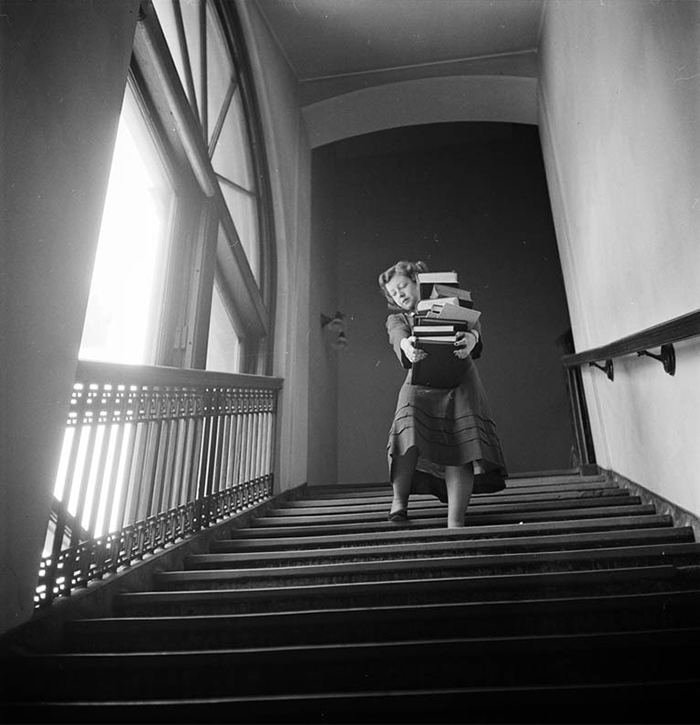
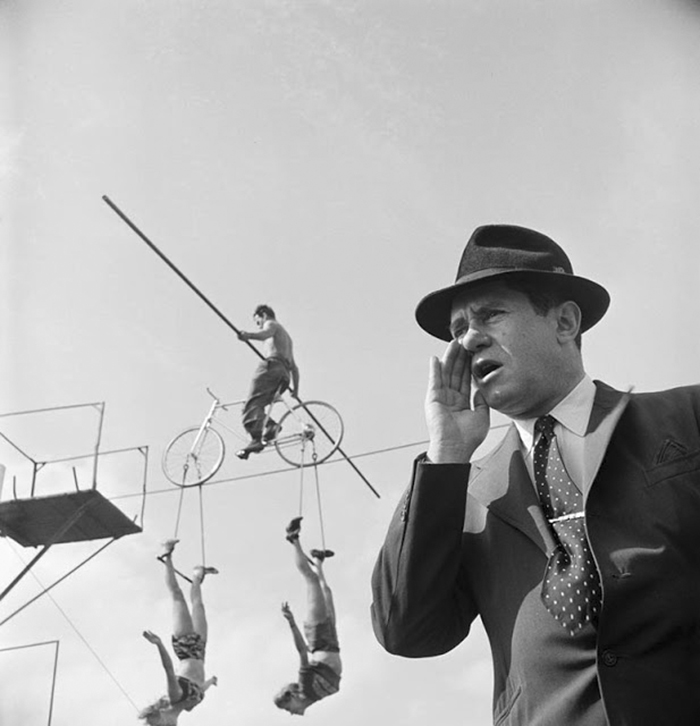
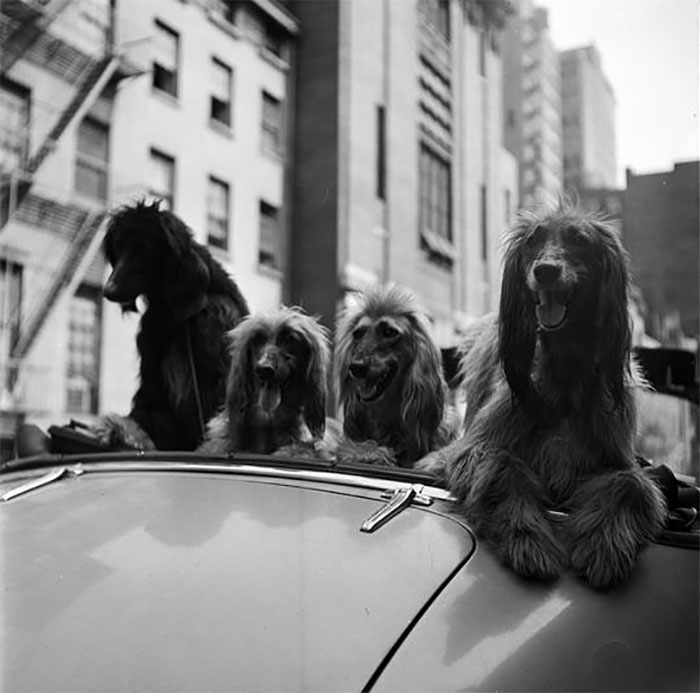
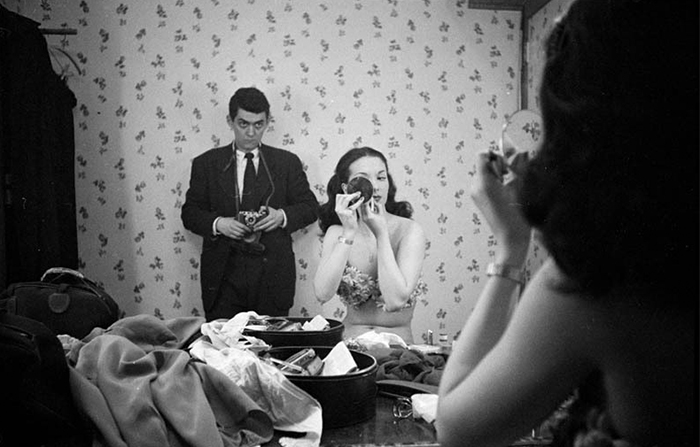




Jerome Marot
Well-known member
Since street is my main genre of photography, this might explain why I am feeling disheartened nowadays.
Street photography is, effectively, dead as a genre. That might explain your feelings indeed.
Cem_Usakligil
Well-known member
Please stop being right all the time Jerome.Street photography is, effectively, dead as a genre. That might explain your feelings indeed.
Jerome Marot
Well-known member
Please stop being right all the time Jerome.
Do you really mean what you are writing? ?
Asher Kelman
OPF Owner/Editor-in-Chief
Street photography is, effectively, dead as a genre. That might explain your feelings indeed.
What is the basis for that, Jerome!
If Cem’s work was recognized tomorrow then it would be “in Vogue” again!
“Ceramic Urinals”, “Bowler Hats” and “Umbrellas in the French Countryside” are not appearing from every art school now either.
But compelling work is worth making no matter what fashion says!
Asher
nicolas claris
OPF Co-founder/Administrator
Cem,
My dear friend, don't ask yourself if your work is in the good range of "genre" or not…
Continue your own way of looking, watching, capturing…
Your genre is your way!
Forget about what should be seen as the "thing" to do.
Just be you
My dear friend, don't ask yourself if your work is in the good range of "genre" or not…
Continue your own way of looking, watching, capturing…
Your genre is your way!
Forget about what should be seen as the "thing" to do.
Just be you
Cem_Usakligil
Well-known member
Thanks mon amiCem,
My dear friend, don't ask yourself if your work is in the good range of "genre" or not…
Continue your own way of looking, watching, capturing…
Your genre is your way!
Forget about what should be seen as the "thing" to do.
Just be you
Asher Kelman
OPF Owner/Editor-in-Chief
Cem,
We agreed that you are good at what you do and perhaps that why your are no longer so amazed!
I am still climbing and not quite on that level ......and in fact no where near it!
Cem, you could challenge yourself anew with tasks that you can’t hardly imagine yourself actually executing. That’s all I do!
But as “Art”, Cem, trust me your existing oeuvre engages, evokes wonder, satisfies and asks us to return........not every single piece, but enough that one can say you have arrived at at least the formal level of being worth collecting and you have a long way to go in opening new horizons for yourself.
Asher
We agreed that you are good at what you do and perhaps that why your are no longer so amazed!
I am still climbing and not quite on that level ......and in fact no where near it!
Cem, you could challenge yourself anew with tasks that you can’t hardly imagine yourself actually executing. That’s all I do!
But as “Art”, Cem, trust me your existing oeuvre engages, evokes wonder, satisfies and asks us to return........not every single piece, but enough that one can say you have arrived at at least the formal level of being worth collecting and you have a long way to go in opening new horizons for yourself.
Asher
Asher Kelman
OPF Owner/Editor-in-Chief
Jerome,
This one is just so powerful! Does it matter if it was staged?

Is it any less provocative?
Thanks Antonio and Jerome for livening things up!
Asher
This one is just so powerful! Does it matter if it was staged?
Is it any less provocative?
Thanks Antonio and Jerome for livening things up!
Asher
James Lemon
Well-known member
Was it the cell phone that killed street photography?
Asher Kelman
OPF Owner/Editor-in-Chief
On the contrary, the phone allows more possibilities for creative thought!Was it the cell phone that killed street photography?
Remember in the Middle Ages in Europe, at least, most folk were illiterate. Reading and writing were for men of leisure, the Clergy, families of the military and businessmen.
When the printing press arrived and many common folk learned to read, it didn’t suddenly end the age of little Chaucers!
The more people were allowed to observe and write, simply enriched the European discourse, led to the Enlightenment, the French Revolution and the Rights of Man!
I see a changed world with the ubiquitous phone. There is much less chance for tyrants to simply lie or police to cover up misuse of power.
Now a child can be creative and spread his or her imaginative “wings” a decade earlier than ever before in the history of mankind.
Perhaps, street photography has just begun!
Asher
Jerome Marot
Well-known member
Was it the cell phone that killed street photography?
No, the cell phone killed photo reporters, which is a different story.
I knew, when I posted that message, that people would be upset. Why do I believe that street photography is dead as an art form?
Maybe we should turn the question around: what makes an art form alive?
People who have followed my ramblings on this forum may remember that, at different times, I gave two different definitions of art:
- art is what creates emotions in the viewer
- art is what hangs in a museum.
We can date back street photography to people like Jean-Eugène-Auguste Atget, but that was not the golden age. The golden age was more people like Robert Doisneau, Henri Cartier-Bresson or, in America, Garry Winogrand (just 3 examples from the West). We can obviously add Stanley Kubrick, the subject of this thread.
Cartier-Bresson is a bit of an outsider here, because he was primarily a journalist. The others did not hesitate to set up the pictures, using models when necessary for example. But even Cartier-Bresson did not picture reality as it was, all the so-called "street pictures" from that golden age present Paris or New-York as in a Disney fantasy. It was never like that. It was like that in the movies of the time, but movies are not true.
And, at the time, people wanted to see that fantasy. It was exotic. Paris was exotic for the Americans, New-York was exotic to the Europeans. So the pictures raised emotions in the viewers and sold well. Emotions + money: it was art.
Then, Robert Frank came and broke that dream in 1958. It would take another decade, but eventually artists would realise that the kind of fantasy pictures that we had was no longer an option. That is probably the point at which street photography actually died (long before the smartphone). The public suddenly new that the dream was a lie.
And the public started travelling. New York or Paris can be presented through the deforming mirrors of Doisneau or Winogrand when only the jet set cross the Atlantic. When everyone can actually board a jet, they know and they take the pictures themselves. It becomes travel photography, souvenirs and memorabilia.
All the famous street photography pictures are over half a century old. That is why the genre is frozen in black and white. That is even true for people like Vivian Maier, her most famous pictures are the early ones, not the later ones in colours.
Now, you will probably object that there are still street photographers today. There are indeed, and more than ever, but they are either amateurs or cater for an amateur market. Especially on the Internet, I can't count the number of street photography sites, who are actually run mainly as an advertising platform for courses designed for the enthusiast. The photography industry played this card: the world is full of people who have a camera, but no subject. The world is full of people like Vivian Maier: not much of a life, not many friends, not many ideas. What are they going to use their brand new camera for? So the industry (magazines, photo web sites...) tells them: "the world is full of subjects!" Just look down the street near you, it is bustling with life and subjects. You just need to be prepared, and it is best if you have a complete collection of lenses for any possible occasion.
Bingo.
So the world is full of photographers with a complete collection of lenses, looking for a subject and not knowing which one. That is actually the reason for the absurd rule that nothing can be set up (while many iconic street photographs were set up): it is best if the amateur spends the cash on lenses than on renting a model. But their pictures are, in truth, all the same, because there is only one reality which is the same for everyone and no dream. And nobody really wants to see their pictures, because they went down the street themselves and already saw the same thing. No real artist would touch the genre with a ten feet pole, because they know it cannot sell and artists need to sell to be recognised as such. The genre is effectively dead.
Besides, if you want to look it up, today you have Google Street View. It is over ten years old. Welcome to the 21st century.
Asher Kelman
OPF Owner/Editor-in-Chief
For me, Photography informs me about things I could just as easilly ignore, fallen palm tree fronds ....to the single pristine iris in the Catholic Church’s neglected garden ....or the girl that made my heart stop that I got to know as my muse, Kate.

My photography, whether in the street or studio is intimate and not done to make money, just as when I share with friends a fine Bordeaux and take in the bouquet and watch my guests savour the liquid mystery from France!
But photography provides me a set of shapes and enchantments that inform my creativity.
I would love to sell our work. I was thrilled a month ago when after a tour of all the OPF works, one picture of flowers by Paula Chamlee and one posed nude of Kate were selected by two buyers.
Getting back to the cell phone, there will be artists who can attract followers on social media, just using the street as their source of subjects and we’ll learn something new. But copying them will again be pointless.
I merely try to execute ideas from my head. Brilliant ideas come easilly. Execution is an entirely different matter!

The camera in my cell phone allows me to capture transient scenes and shapes and feeds my brain. If by chance I get really well known for my noeriety or sculpture, my photography could perhaps be valued more. In the meanwhile, I photograph as I am compelled to!
It’s collecting exotic fruit or meeting fascinating new people on travels. I never get satiated.



BUT, if indeed the test for value of the Street Photograph is the degree to which it hangs in museums and galleries, so far, I have failed!
BTW, as far as I understand, “market making”, (by arranging for “buyers” to acquire art), has been the practice for some time.
Later, art can be donated to museums and non-profits for the inflated “value”, expressed in the most recent “sales”!
I understand that even Ansel Adams might have done that too, at least at the outset. The money is made by the wealthy having massive tax deductions after keeping “Art” for 5 years or more and several cycles of “sales”!
Back to the cell phone: I believe it’s close to the best street camera and will get marvelously better.
Asher
My photography, whether in the street or studio is intimate and not done to make money, just as when I share with friends a fine Bordeaux and take in the bouquet and watch my guests savour the liquid mystery from France!
But photography provides me a set of shapes and enchantments that inform my creativity.
I would love to sell our work. I was thrilled a month ago when after a tour of all the OPF works, one picture of flowers by Paula Chamlee and one posed nude of Kate were selected by two buyers.
Getting back to the cell phone, there will be artists who can attract followers on social media, just using the street as their source of subjects and we’ll learn something new. But copying them will again be pointless.
I merely try to execute ideas from my head. Brilliant ideas come easilly. Execution is an entirely different matter!
The camera in my cell phone allows me to capture transient scenes and shapes and feeds my brain. If by chance I get really well known for my noeriety or sculpture, my photography could perhaps be valued more. In the meanwhile, I photograph as I am compelled to!
It’s collecting exotic fruit or meeting fascinating new people on travels. I never get satiated.
BUT, if indeed the test for value of the Street Photograph is the degree to which it hangs in museums and galleries, so far, I have failed!
BTW, as far as I understand, “market making”, (by arranging for “buyers” to acquire art), has been the practice for some time.
Later, art can be donated to museums and non-profits for the inflated “value”, expressed in the most recent “sales”!
I understand that even Ansel Adams might have done that too, at least at the outset. The money is made by the wealthy having massive tax deductions after keeping “Art” for 5 years or more and several cycles of “sales”!
Back to the cell phone: I believe it’s close to the best street camera and will get marvelously better.
Asher
Last edited:
Jerome Marot
Well-known member
Back to the cell phone: I believe it’s close to the best street camera and will get marvellously better.
Good that you think so. I would guess that, for most cell phone users, the most important camera is the one on the front.
Asher Kelman
OPF Owner/Editor-in-Chief
Yes, HLB and Winogrand are indeed both utterly deaded, and no number of lenses we buy will bring them back!
Asher
Asher
Asher Kelman
OPF Owner/Editor-in-Chief
Jerome,
Back to Antonio’s first example!
This shouldn’t be underestimated even though of course the girl with the precarious pile of library books is far more engaging, because she’s in jeopardy!
But here, we only see the French polka dot Dress and not her face or the breasts that make up so much of a young woman's allure.
In fact, Kubrick has generously allowed us to imagine how charming and comely she might be. This view is more than simufficient to get our attention. Either we run after and get affirmation of achuge let down or just let her go and imagine the rest.
The restraint in allowing the audience to complete his whole idea is what Kubrick used at a young age to seduce is audience to linger with his work.
Asher
James Lemon
Well-known member
On the contrary, the phone allows more possibilities for creative thought!
Remember in the Middle Ages in Europe, at least, most folk were illiterate. Reading and writing were for men of leisure, the Clergy, families of the military and businessmen.
When the printing press arrived and many common folk learned to read, it didn’t suddenly end the age of little Chaucers!
The more people were allowed to observe and write, simply enriched the European discourse, led to the Enlightenment, the French Revolution and the Rights of Man!
I see a changed world with the ubiquitous phone. There is much less chance for tyrants to simply lie or police to cover up misuse of power.
Now a child can be creative and spread his or her imaginative “wings” a decade earlier than ever before in the history of mankind.
Perhaps, street photography has just begun!
Asher
No, the cell phone killed photo reporters, which is a different story.
I knew, when I posted that message, that people would be upset. Why do I believe that street photography is dead as an art form?
Maybe we should turn the question around: what makes an art form alive?
People who have followed my ramblings on this forum may remember that, at different times, I gave two different definitions of art:
I now realise that the two are necessary. You need the emotion and you need the social recognition. The social recognition, in turn, needs financing. Things which hang in museum are expensive and that, in turn, implies marketing efforts. It also implies that the artist will be able to live from his or her art. Which makes him not an amateur, as amateur do it for free.
- art is what creates emotions in the viewer
- art is what hangs in a museum.
We can date back street photography to people like Jean-Eugène-Auguste Atget, but that was not the golden age. The golden age was more people like Robert Doisneau, Henri Cartier-Bresson or, in America, Garry Winogrand (just 3 examples from the West). We can obviously add Stanley Kubrick, the subject of this thread.
Cartier-Bresson is a bit of an outsider here, because he was primarily a journalist. The others did not hesitate to set up the pictures, using models when necessary for example. But even Cartier-Bresson did not picture reality as it was, all the so-called "street pictures" from that golden age present Paris or New-York as in a Disney fantasy. It was never like that. It was like that in the movies of the time, but movies are not true.
And, at the time, people wanted to see that fantasy. It was exotic. Paris was exotic for the Americans, New-York was exotic to the Europeans. So the pictures raised emotions in the viewers and sold well. Emotions + money: it was art.
Then, Robert Frank came and broke that dream in 1958. It would take another decade, but eventually artists would realise that the kind of fantasy pictures that we had was no longer an option. That is probably the point at which street photography actually died (long before the smartphone). The public suddenly new that the dream was a lie.
And the public started travelling. New York or Paris can be presented through the deforming mirrors of Doisneau or Winogrand when only the jet set cross the Atlantic. When everyone can actually board a jet, they know and they take the pictures themselves. It becomes travel photography, souvenirs and memorabilia.
All the famous street photography pictures are over half a century old. That is why the genre is frozen in black and white. That is even true for people like Vivian Maier, her most famous pictures are the early ones, not the later ones in colours.
Now, you will probably object that there are still street photographers today. There are indeed, and more than ever, but they are either amateurs or cater for an amateur market. Especially on the Internet, I can't count the number of street photography sites, who are actually run mainly as an advertising platform for courses designed for the enthusiast. The photography industry played this card: the world is full of people who have a camera, but no subject. The world is full of people like Vivian Maier: not much of a life, not many friends, not many ideas. What are they going to use their brand new camera for? So the industry (magazines, photo web sites...) tells them: "the world is full of subjects!" Just look down the street near you, it is bustling with life and subjects. You just need to be prepared, and it is best if you have a complete collection of lenses for any possible occasion.
Bingo.
So the world is full of photographers with a complete collection of lenses, looking for a subject and not knowing which one. That is actually the reason for the absurd rule that nothing can be set up (while many iconic street photographs were set up): it is best if the amateur spends the cash on lenses than on renting a model. But their pictures are, in truth, all the same, because there is only one reality which is the same for everyone and no dream. And nobody really wants to see their pictures, because they went down the street themselves and already saw the same thing. No real artist would touch the genre with a ten feet pole, because they know it cannot sell and artists need to sell to be recognised as such. The genre is effectively dead.
Besides, if you want to look it up, today you have Google Street View. It is over ten years old. Welcome to the 21st century.
Jermome
I am certain that there are as many opinions about street photography as there are photographers. Pictures become more valuable over time as a record of history. They may not have the value today but what about 50 years from now? Yes many photos were staged in the street especially in the early days because of the limitations of the camera may be just some of the reasons.
It's would be difficult to comment on the style of Vivian Maier considering she never published any of her own photos. However they are more likely than not similar to some of the greats.
Consider the following picture taken by someone who happened to have a camera in the street. Is this a street photo,documentary, art, journalism or just plain iconic?
http://time.com/3456028/the-most-beautiful-suicide-a-violent-death-an-immortal-photo/
BTW I was referring to the sexyness of the street when cell phones did not exist. These days everyone has a cell-phone attached to themselves in some manner.
Last edited:
Asher Kelman
OPF Owner/Editor-in-Chief
Universal education has not destroyed literature!
Asher
Asher

